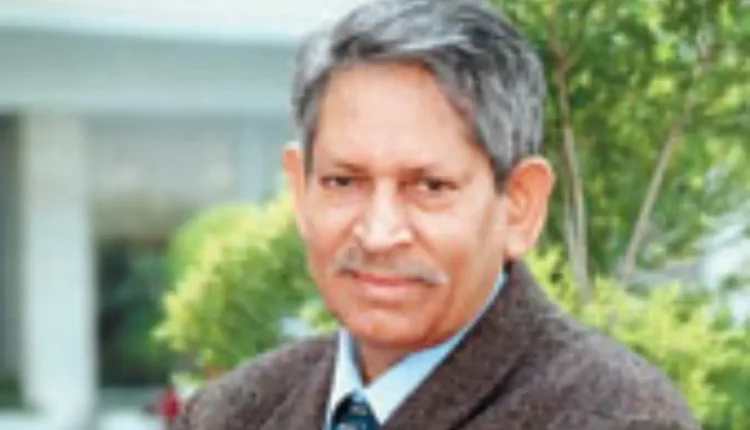In the annals of oceanography and natural disaster research, few names resonate as powerfully as that of Tad Murty. An Indian-Canadian oceanographer with an impressive academic and professional background, Murty’s legacy is defined by his groundbreaking work on tsunamis and his controversial stance on climate change. His journey from a small town in southern India to becoming a global authority in his field is nothing short of inspirational—a story of dedication, intellectual rigor, and a willingness to challenge the status quo.
A Scholar’s Beginnings of Tad Murty: From India to the World Stage
Born in 1937 in southern India, Tad Murty’s early life was marked by a deep curiosity about the natural world. His academic journey began at Andhra University in Visakhapatnam, where he earned a Bachelor’s degree in Physics. His exceptional academic prowess earned him a full scholarship to the University of Chicago, one of the most prestigious institutions in the world. Here, Murty would go on to obtain both his Master’s and PhD degrees in Meteorology and Oceanography by 1967.
Murty’s decision to pursue oceanography was not just a career choice but a calling. His studies at the University of Chicago, a hub for innovative scientific thought, laid the foundation for what would become a storied career in understanding the oceans and their powerful forces. His work caught the attention of the U.S. National Oceanic and Atmospheric Administration (NOAA), which offered him a position. However, Murty chose to move to Canada, a decision that would define his professional life.
A Career Dedicated to Tsunami Research
In Canada, Tad Murty joined the Department of Fisheries and Oceans as a Senior Research Scientist, a position he held for 27 years. His work in Canada solidified his reputation as one of the world’s leading experts on tsunamis. Long before tsunamis became a part of global consciousness following the devastating Indian Ocean tsunami in 2004, Murty was already at the forefront of researching these powerful natural disasters.
Murty’s expertise was not just confined to theoretical research. Tad Murty was deeply involved in practical applications, including the development of early warning systems that could save lives in tsunami-prone regions. His commitment to understanding and mitigating the impacts of tsunamis led to the publication of 14 books, 248 journal articles, and 355 conference papers—an extraordinary body of work that continues to influence the field of oceanography today.
After retiring from his role in Canada in 1994, Murty’s expertise was sought worldwide. He became a Professor of Earth Science at Flinders University in Adelaide, Australia, and later the Director of the National Tide Center in Australia. His global influence grew as he mentored the next generation of scientists, sharing his vast knowledge and experience.
A Voice in the Climate Change Debate
While Tad Murty is celebrated for his contributions to tsunami research, his views on climate change sparked considerable controversy. In the early 1990s, after being commissioned by Fisheries and Oceans Canada to prepare a position paper on global warming, Murty underwent a significant shift in his perspective. Initially convinced of the dangers of human-induced climate change, his research led him to question the prevailing scientific consensus.
Tad Murty became one of the most vocal skeptics of anthropogenic global warming, famously describing it as “the biggest scientific hoax being perpetrated on humanity.” His stance placed him at odds with many in the scientific community but also earned him a place among a group of scientists who challenged the mainstream narrative.
In 2006, Tad Murty was one of sixty scientists who signed an open letter to Canadian Prime Minister Stephen Harper, criticizing the Kyoto Protocol and questioning the scientific basis of human-induced climate change.
Murty’s position on climate change reflects his broader approach to science: a relentless pursuit of truth, even if it means challenging widely held beliefs. His willingness to stand by his convictions, regardless of popular opinion, is a testament to his intellectual integrity and courage.
A Lasting Legacy in Science and Mentorship
Tad Murty’s impact on the scientific community extends far beyond his research. As an educator, he played a crucial role in shaping the careers of countless students and young scientists. His tenure as an Adjunct Professor in the Department of Civil Engineering at the University of Ottawa is particularly noteworthy. Here, he continued to teach graduate courses and mentor students until the very end of his career.
Murty’s editorial work as co-editor of the journal Natural Hazards further demonstrates his dedication to advancing scientific knowledge. His editorial leadership was instrumental in establishing the journal as a leading publication in the field of natural hazards and risk research. Murty’s colleagues remember him as a fair, straightforward, and diligent editor who worked tirelessly to uphold the journal’s standards.
Also Read:Fayeeza Kathree-Setiloane: Upholding Constitutional Rights and Judicial Excellence

